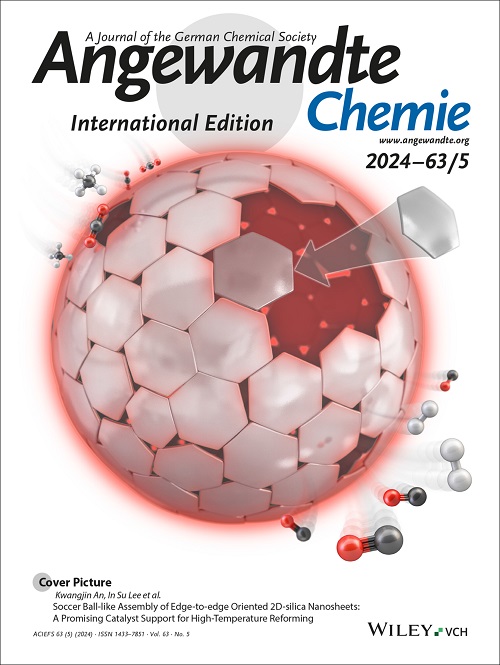通过分子内电子转移稳定Cu3+活性中心促进葡萄糖完全电氧化
IF 16.9
1区 化学
Q1 CHEMISTRY, MULTIDISCIPLINARY
引用次数: 0
摘要
开发有效的葡萄糖(Glu)电转化电催化剂是传感应用的迫切需要;然而,在催化过程中受到催化活性中心不稳定的严重困扰,导致活性位点严重失活,导致Glu电氧化不完全。在此,我们报道了一类具有稳定高价位(CuO‐MOF‐Pt1)的单原子掺杂铜基金属有机骨架(MOF),实现了Glu的完全氧化和对Glu的毫安电流响应。我们发现MOF和Pt的-CN作为电子吸出位点,诱导Cu位点的电子转移,促进稳定Cu3+活性中心的电化学生成。利用操作还原光谱和计算,我们发现在CuO‐MOF‐Pt1上连续的C─C键断裂可以实现完全的葡萄糖电氧化反应(GOR),并且稳定的Cu3+活性中心是其令人瞩目的GOR活性的原因。值得注意的是,CuO‐MOF‐Pt1具有相当的Glu传感性能,具有2.587 mA mM−1 cm−2的高灵敏度,0.93µM的低检测限和非凡的耐用性。我们进一步构建了一个基于CuO - MOF - Pt1的小型化传感器,能够准确检测唾液中的Glu。这项工作为通过电子结构调节来促进Glu电氧化的稳定金属活性中心的精确设计开辟了一条鼓舞人心的途径。本文章由计算机程序翻译,如有差异,请以英文原文为准。
Stabilizing Cu3+ Active Center by Intramolecular Electron Transfer for Boosting Complete Glucose Electrooxidation
The development of effective electrocatalysts for glucose (Glu) electro‐conversion is highly desirable for sensing applications; however, is greatly plagued by unstable catalytic active centers during the catalytic process, leading to severe inactivation of active sites and incomplete Glu electrooxidation. Herein, we report a class of single‐atom Pt‐doped Cu‐based metal‐organic frameworks (MOFs) with stable high‐valence Cu sites (CuO‐MOF‐Pt1 ), achieving a complete oxidation of Glu and a milliampere current response toward Glu. We demonstrate that the –CN of MOF and Pt serve as electron‐withdrawal sites to induce electron transfer of the Cu site, promoting the electrochemical generation of the stabilized Cu3+ active center. Using operando spectroscopy and computation, we uncover that a complete glucose electrooxidation reaction (GOR) can be achieved by successive C─C bond scission over CuO‐MOF‐Pt1 , and a stable Cu3+ active center is responsible for its impressive GOR activity. Notably, CuO‐MOF‐Pt1 delivers comparable Glu sensing performance with a high sensitivity of 2.587 mA mM−1 cm−2 , a low detection limit of 0.93 µM, and extraordinary durability. We further constructed a miniaturized CuO‐MOF‐Pt1 ‐based sensor, enabling accurate detection of Glu in saliva. This work opens an inspiring avenue to the precise design of stable metal activity centers through electronic structure regulation for boosting Glu electrooxidation.
求助全文
通过发布文献求助,成功后即可免费获取论文全文。
去求助
来源期刊
CiteScore
26.60
自引率
6.60%
发文量
3549
审稿时长
1.5 months
期刊介绍:
Angewandte Chemie, a journal of the German Chemical Society (GDCh), maintains a leading position among scholarly journals in general chemistry with an impressive Impact Factor of 16.6 (2022 Journal Citation Reports, Clarivate, 2023). Published weekly in a reader-friendly format, it features new articles almost every day. Established in 1887, Angewandte Chemie is a prominent chemistry journal, offering a dynamic blend of Review-type articles, Highlights, Communications, and Research Articles on a weekly basis, making it unique in the field.

 求助内容:
求助内容: 应助结果提醒方式:
应助结果提醒方式:


